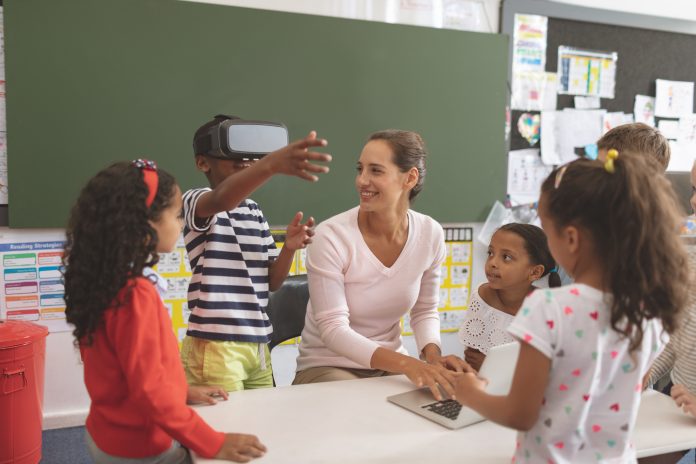Felicity Parsisson, Learning Designer at FutureLearn, explains three ways in which EdTech will benefit this century’s learners
The method of instruction is not to be underestimated: from interactive whiteboards and shared screens to flipped classrooms and Massive Open Online Courses (MOOC)s, the ‘EdTech’ moniker appears in every possible educational setting. There are as vast and diverse an array of technologies, tools and pedagogies falling under the EdTech label as there is a vast and diverse spectrum of learners and educators using it. With 66% of millennials and 59% of Gen Z surveyed by Pearson agreeing that ‘technology will transform how college students learn in the future’, it seems clear that the use of technology in teaching and learning contexts is not just predicted: it is expected. Coupled with the majority of Gen Z stating a preference for learning through YouTube videos (59%), as opposed to printed books (47%) and the explosion of MOOCs documented by Class Central (an estimated 101 million learners as of their 2018 research), and it becomes apparent that EdTech is already an important part of the learning landscape. With that in mind, this article considers three key functions of EdTech for this century’s learners.
EdTech as a way to increase access, widen participation and expand skillsets
In 2018, the World Economic Forum warned that as the nature of work changes, by 2022, 54% of the world’s employees will require significant reskilling. Many key skills for today and tomorrow’s workforce centre on technology, particularly in areas such as data science and robotics; and the demand for skilled workers drastically outstrips supply. Similarly, The European Commission has suggested that 37% of European workers lack even basic digital skills. It will no longer be possible to simply pay for workers with premium skills – there simply won’t be enough people with those skills around to fulfil the positions required.
This is where EdTech and online education can help. In the UK, government-backed initiatives like the Institute of Coding (IoC) and the National Centre for Computing Education (NCCE) are using online platforms to tackle the issue head-on. The IoC was formed to respond to the UK’s digital skills gap and has created an online course catalogue to help guide learners in their journey to a digital career. This online catalogue brings together a wide range of digital skills courses that are being offered by the IoC’s 30+ partner universities and industry educators. The IoC not only addresses today’s skills gap by upskilling in 21st Century skills but also aims to educate about relevant careers, expanding their reach and making them both attractive and accessible to a wider and more diverse group of learners (and future workers). Meanwhile, the NCCE operates at a grassroots level by teaching teachers the skills needed to ensure every child in every school in England has access to world-leading computing education, indeed, they are an example of an organisation with many online courses to help in that mission.
EdTech as a way to allow differentiation and choice
Most classes have a relatively varied learner profile – that is, not every learner is going to be at the same level, have the same method of approaching tasks, have the same educational background or emotional attitude towards what it is they are learning. Coupled with affective factors that might impact a student’s progress (home environment, work pressures, physical limitations), EdTech can help to support both teachers and learners personalise the learning experience.
Advances in EdTech and online learning platforms can support educators and empower learners through more easily incorporating addendums to the core curriculum in a digital learning environment. Simply link- ing to further reading or the creation of easy-to-share extra practice activities, for example, can provide the support or challenge needed to engage students and support learning, whereas choice could be given through learners deciding themselves how they wish to evidence their learning and to so with a variety of EdTech tools. Videos can show step-by-step ways of approaching a task – for example, setting up the stages of a science experiment for learners to check their work against.
Another way in which EdTech can allow for differentiation and choice is its suitability for the flipped classroom, where learners spend ‘homework’ time outside of class more independently preparing for their face-to-face lessons. This directed but self-paced method means learners have more time to get to grips with key concepts and ideas at home, freeing up class time for deeper application of their learning or time to try practical tasks out.
EdTech as a way to support, connect and engage
The opportunities for diverse, self-selecting communities of learners on MOOCs and other online platforms far surpasses that which could be achieved by even the largest school or university campus. With Pearson’s report demonstrating that Gen Z in particular value diverse relationships, it is clear that the opportunities afforded by the global reach of learning online can facilitate this. But there’s much more to connecting and engaging than simply learning online with a dispersed international cohort. Products such as Microsoft Teams or GSuite can be used successfully to make light work of collaborative projects for learners in a school class, giving students tools to plan, draft, edit and produce work with ease. Specific products also exist to help teachers easily monitor learners’ progress, while online tutorials can be more interactive and productive than face-to-face ones as teachers and learners take turns sharing screens or fulfilling the presenter role.
Considering these three key ways which EdTech can impact today’s learners is not to suggest that all teach- ing and learning will become fully tech-based, or that face-to-face teaching will be obsolete. Technology without pedagogy is simply another teaching tool, and a productive, relevant and useful educational experience is much more than its composite parts, but EdTech can bring to life ideas and experiences in a way that adds richness, practical application and skills development to the curricula, while serving to inspire the data scientists and automation experts of tomorrow.











